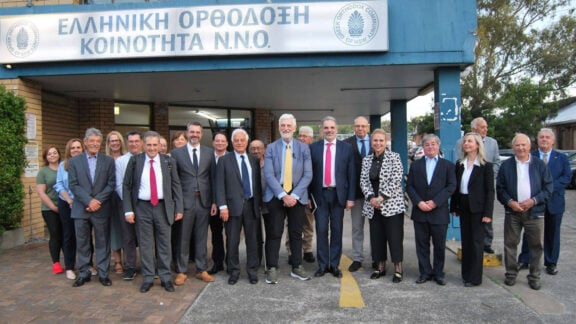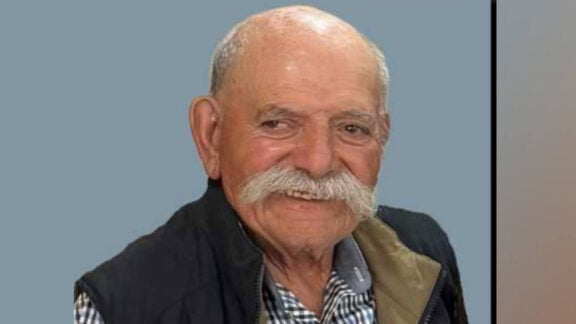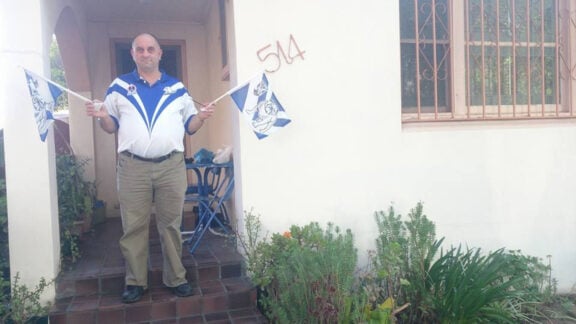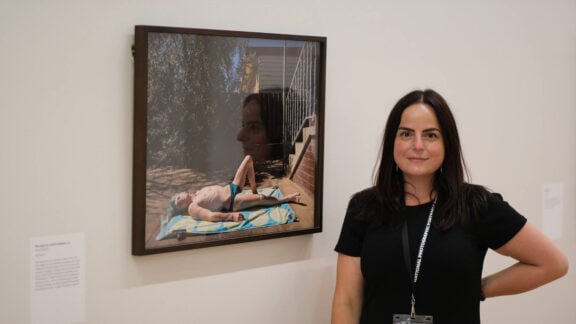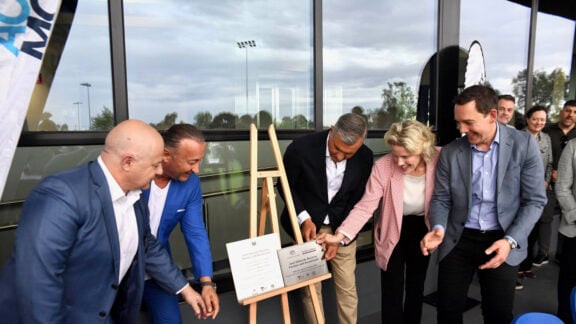It’s the third time that Christos and Malamati Tsiantikos have faced flooding in the Maribyrnong home they’ve lived in for 59 years.
But the October 2022 events found them insufficiently warned, and have put their health and well-being at risk, according to their daughter Stella Starc.
In the early morning hours of Friday 14 October, the Tsiantikos couple were among the many residents in Melbourne’s inner-west suburbs who received a message to evacuate. But Ms Starc believes the alert was sent last minute and caught people off guard.
“I had slept there the night before and they sent the alert out but they said the river would peak at 2.9 metres. But in the ’93 floods the water wouldn’t even reach my mom’s front fence at 3.3 metres,” Ms Starc said.
By 6am, within an hour after the evacuation SMS was sent, the water had covered their street.

Ms Starc said that only one property on her parents’ street was included in a door-knocking list used by SES staff and a police officer to alert residents.
“Every single house is affected on Van Ness Avenue, I don’t know why they only had one house on that list. There’s a meeting tonight at the community centre and I’m planning to ask that question,” she told Neos Kosmos on Tuesday afternoon.
“The insurance has come out and appointed some cleaning groups to dry out the the mould, which is what happens initially, the drying process. And we’re waiting on a quote from the builders.”
Ms Starc said she’s unhappy with the way the emergency situation was handled by authorities.

“They’re claiming that they gave us enough time. They didn’t. And if the Bureau of Meteorology were unsure of the level of the height, they could have said ‘Hey, we’re unsure, we don’t know how high it’s gonna get. The river had a peak of 4.1.”
But she became more upset in the aftermath of the flooding, when seeking support by her father’s aged care services provider.
Since evacuating the property, the Tsiantikos couple are being hosted at their daughter’s house and it’s not looking like they will be able to return anytime soon.
“My father has an aged care package with $50,000 in it and they won’t let us get anything, not even a bed. And I said to them [the provider], ‘do you understand the situation is dire? They currently live with me and they cannot go back to their property’. And what they do is they’re reading the guidelines to me over the phone.”
Ms Starc said her father is currently sleeping on the sofa at her home as the bedroom is accessed by stairs from where he has fallen in the past.
“I feel it’s a health and safety issue at the moment and that they’re not looking after his well-being.”
The daughter recounted contacting her father’s aged care services provider for the bed request, which she says was initially approved then rejected based on “the guidelines that said it’s a household item.”

“I called them and tried to escalate for days.
“They were telling me that I should understand the regulation means we need to go through a process and I was saying this is not a usual normal situation and that it should be prioritised.”
Neos Kosmos contacted the Older Persons Advocacy Network (OPAN), the independent organisation providing information and advocacy services to older people across Australia, who stated:
- The legislation outlining what can be funded from the aged care package refers to ‘non-household items’. However, it is not specified what is included or excluded under the term.
- Providers use a ‘decision-making-tool’ to make determinations according to each individual client’s circumstances, including emergency situations.
- It is standard process for any piece of equipment funded under the package to have a therapeutic recommendation, with the assessment provided usually by an occupational therapist.
- What an OPAN advocate can do in a similar situation, is raise the matter further directly with the provider to ask them to show how they’ve used their decision-making tool to say no to the request. If the provider maintains the same position and the older person is not satisfied, OPAN can support the family to take this further to the Aged Care Safety and Quality Commission.

“I asked for a bed for dad, not a 100′ plasma television. They don’t care at all.”
“I’m going to write something and go to the Minister’s office and say ‘I need help. I needed help yesterday, not today.’
“I want everyone to know that the aged care system needs to change, and it needs to change now. The [Aged Care Quality and Safety] Commission has done nothing.”
“At aged 93 and 88 my parents have been left to their own devices at their greatest time of need,” said Ms Starc.

* Do you need an aged care advocate?
An advocate can help you explore options and make informed decisions. They can also help you to raise your concerns and work towards resolving them.
– Call the National Aged Care Advocacy Line on 1800 700 600 (free call)
– Visit the Older Persons Advocacy Network website opan.com.au


